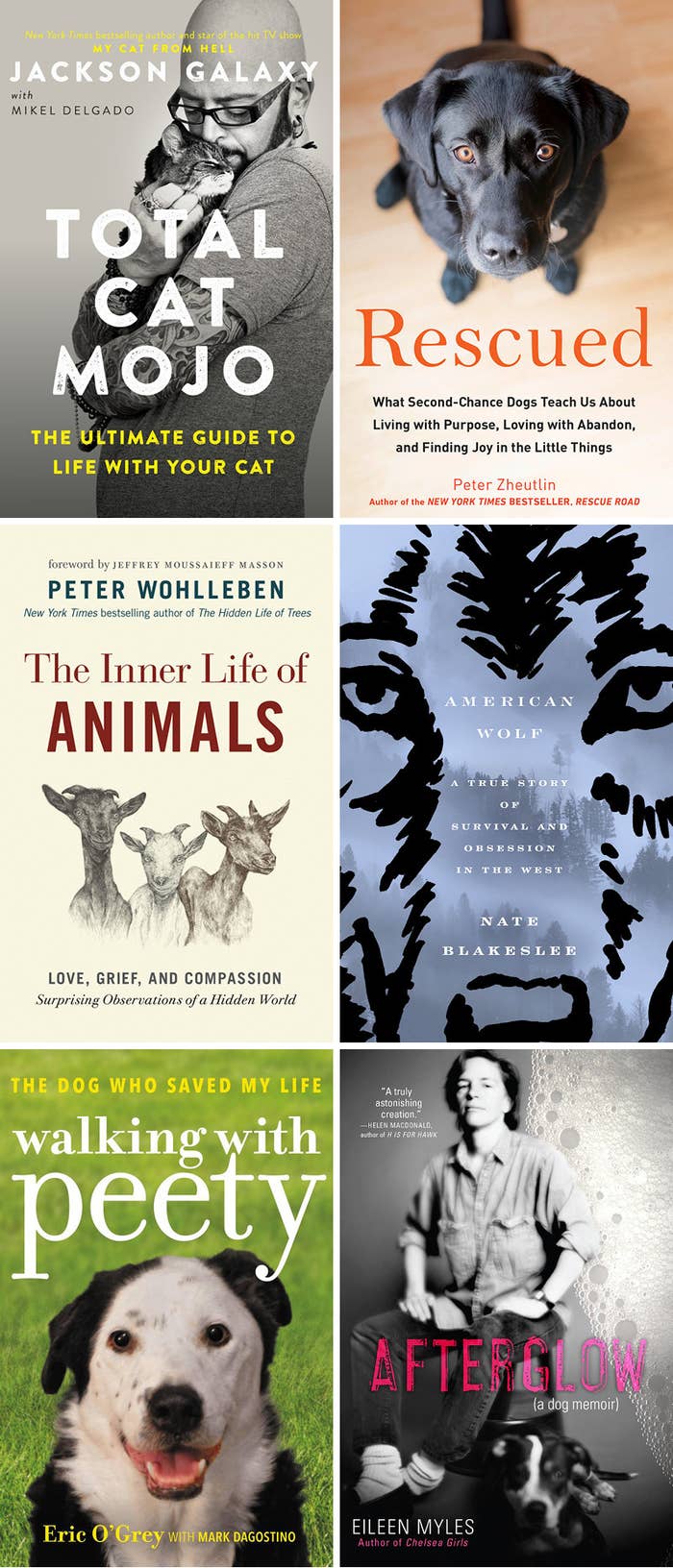
You don't have to live with animals to be moved by stories about them, but those who do might especially appreciate these. For dog lovers there's Rescued: What Second-Chance Dogs Teach Us About Living With Purpose, Loving With Abandon, and Finding Joy in the Little Things, which does exactly what its subtitle promises but, be warned, will inspire any reader to immediately go out and adopt as many dogs as possible. (Check out a preview here.)
Ditto Eric O' Grey's Walking With Peety, the tearjerker true story of a man whose doctor recommends a shelter dog, Peety, when he's diagnosed with Type 2 diabetes — and how Eric and Peety go on to save each other's lives.
Total Cat Mojo by Jackson Galaxy is "the ultimate guide to life with your cat" but the life-long cat mom or dad will find it as valuable as the first-timer. It won't just teach you how to care for your cats — it will teach you how to understand them.
The Inner Life of Animals — Peter Wohlleben's follow-up to his charming The Hidden Life of Trees — is a delightful, fascinating look at the emotions exhibited by different breeds. Nate Blakeslee's American Wolf reads like a novel, following the life of O-Six, the legendary alpha female Yellowstone wolf.
And though Eileen Myles' Afterglow will especially resonate with a reader who knows what it's like to love a pet like family, this memoir is for anyone open to abstract, big-question thinking about consciousness, life, and whatever comes next. Myles' "dog memoir" — at its core, an autobiography about Myles and her beloved, late dog Rosie — is groundbreaking in its form and is most likely best for someone comfortable with experimental literature.

Listen, you might think facts about umbrellas, colors, or log cabins wouldn't make for interesting books, but you would be WRONG — especially when it comes to people who can't get enough of random little tidbits. Kassia St. Clair's The Secret Lives of Color asks readers to look at color in a new way — through history (preview here); Marion Rankine's Brolliology dives into the historical context, social connotations, and literary implications of umbrellas; and Andrew Belonsky's The Log Cabin: An Illustrated History is a stunning, image-driven examination of the "uniquely American symbol of home and hearth."
For the word nerds, there's Word by Word: The Secret Life of Dictionaries, in which Kory Stamper welcomes the reader into the lively world of lexicography. Maybe you've got a friend whose favorite language is numbers — Wonders Beyond Numbers is the book for them. Johnny Ball follows the history of mathematics, tracking the ways in which humans started to understand shapes, numbers, and patterns. And Where the Animals Go, by James Cheshire and Oliver Uberti, merges wildlife and data, showing through beautiful infographics all that innovations in animal tracking have taught us.
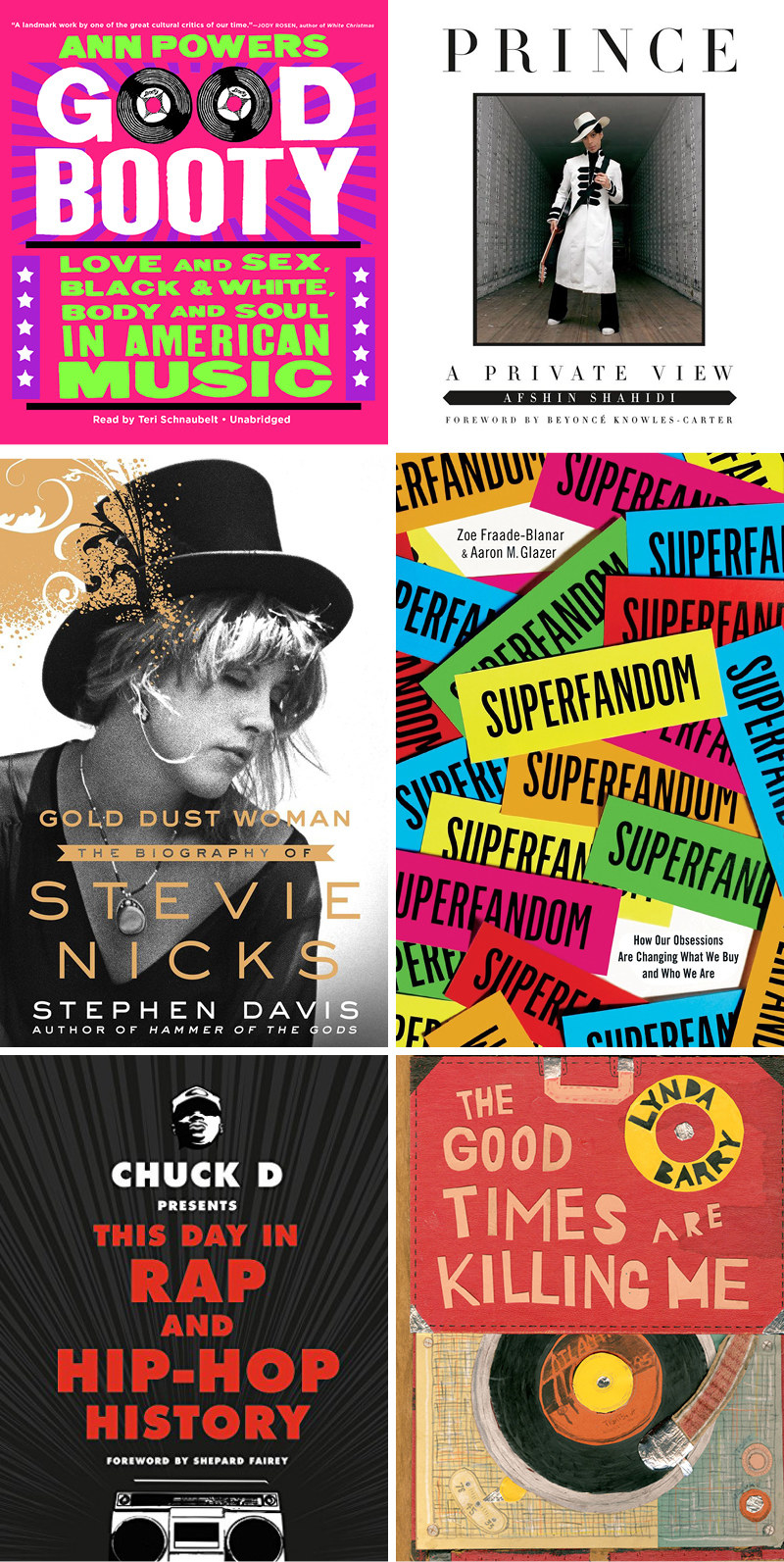
Hone in on classic rock in Gold Dust Woman, Stephen Davis's best-selling biography of Stevie Nicks, or dive into something with a little more soul with photographer Afshin Shahidi's Prince: A Private View, an intimate portrait (literally — this book is very much image-based) of the late artist. For the hip-hop heads, there's Chuck D's This Day in Rap and Hip-Hop History, a comprehensive look at rap and hip-hop from 1973 to today.
Speaking of history, two books cross genre lines to examine social and cultural concepts through music: Ann Powers' Good Booty: Love and Sex, Black and White, Body and Soul in American Music looks at the ways in which we use music to communicate such fraught issues as race and sex; Superfandom by Zoe Fraade-Blanar and Aaron M. Glazer explores fandom itself — its history, stigma, psychology, and, of course, its effects on our economy.
For fiction fans, Lynda Barry's The Good Times Are Killing Me is a quick but heartfelt novel about race, class, and poverty in 1970s America, with each vignette connected by the protagonist's love of and connection to music.
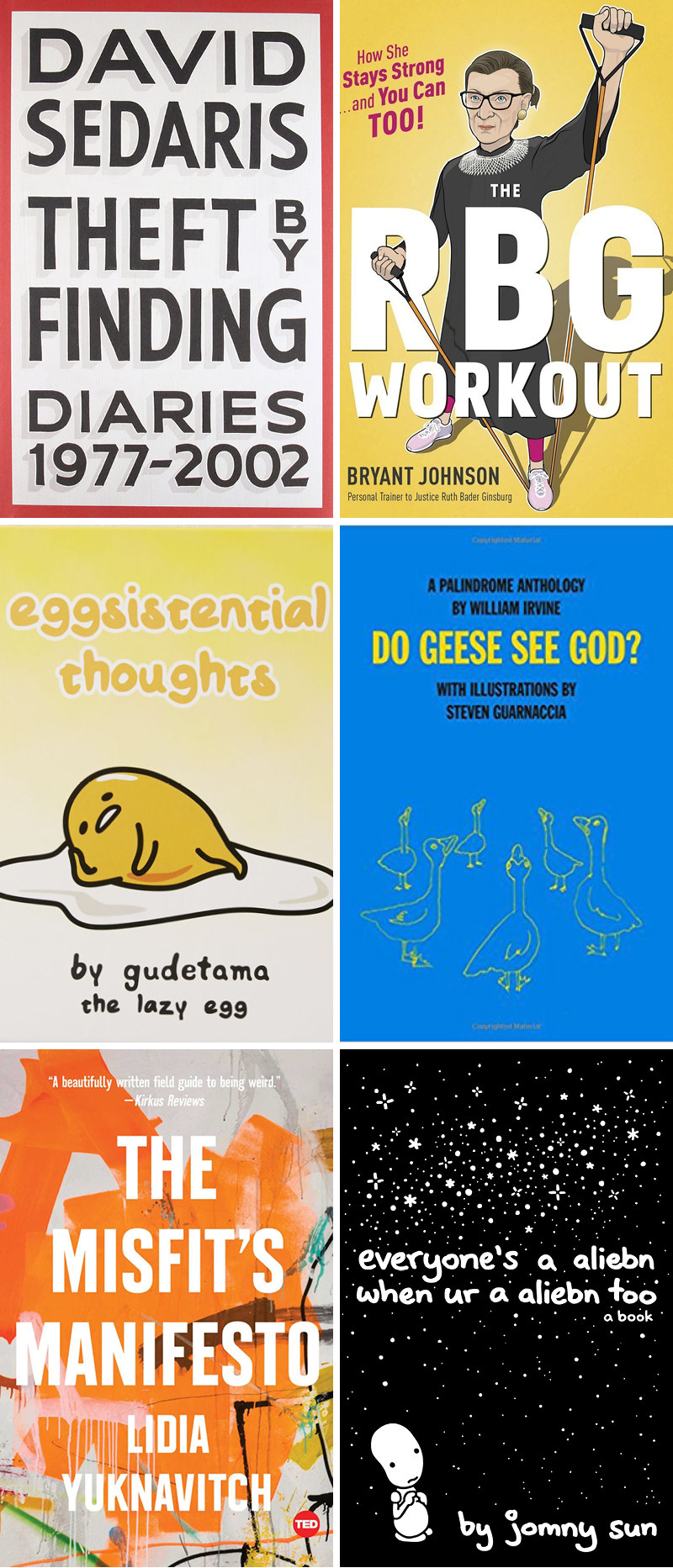
It's a good year for deep thoughts from cute characters.
There's a decent chance your quirkiest friend is already on the Gudetama tip, but if not they will probably very much relate to Sanrio's most adorable character (sorry, Keroppi). Eggsistential Thoughts by Gudetama the Lazy Egg offers musings and ennui on par with the best of history's thinkers, delivered by an impossibly adorable egg. Then there's Jomny the lonely alien, trying to understand the big ideas that make up life on Earth — relationships, identity, survival — in Everyone's an Aliebn When Ur a Aliebn Too by Jomny Sun.
For the silly folks, you've got The RBG Workout by Bryant Johnson, Ruth Bader Ginsburg's certified personal trainer — quirky concept, real workout. Do Geese See God? is a collection of utterly charming palindromes by language master William Irvine, each paired with illustrations by Steven Guarnaccia.
David Sedaris has one of the most fascinating — often twisted — minds out there and Theft by Finding: Diaries 1977–2002 gives readers a front-row seat to his poignant and hilarious thoughts and observations. For those who like to consider the value of weirdness more seriously, there's Lydia Yuknavitch's The Misfit's Manifesto — an impassioned defense for not fitting in.
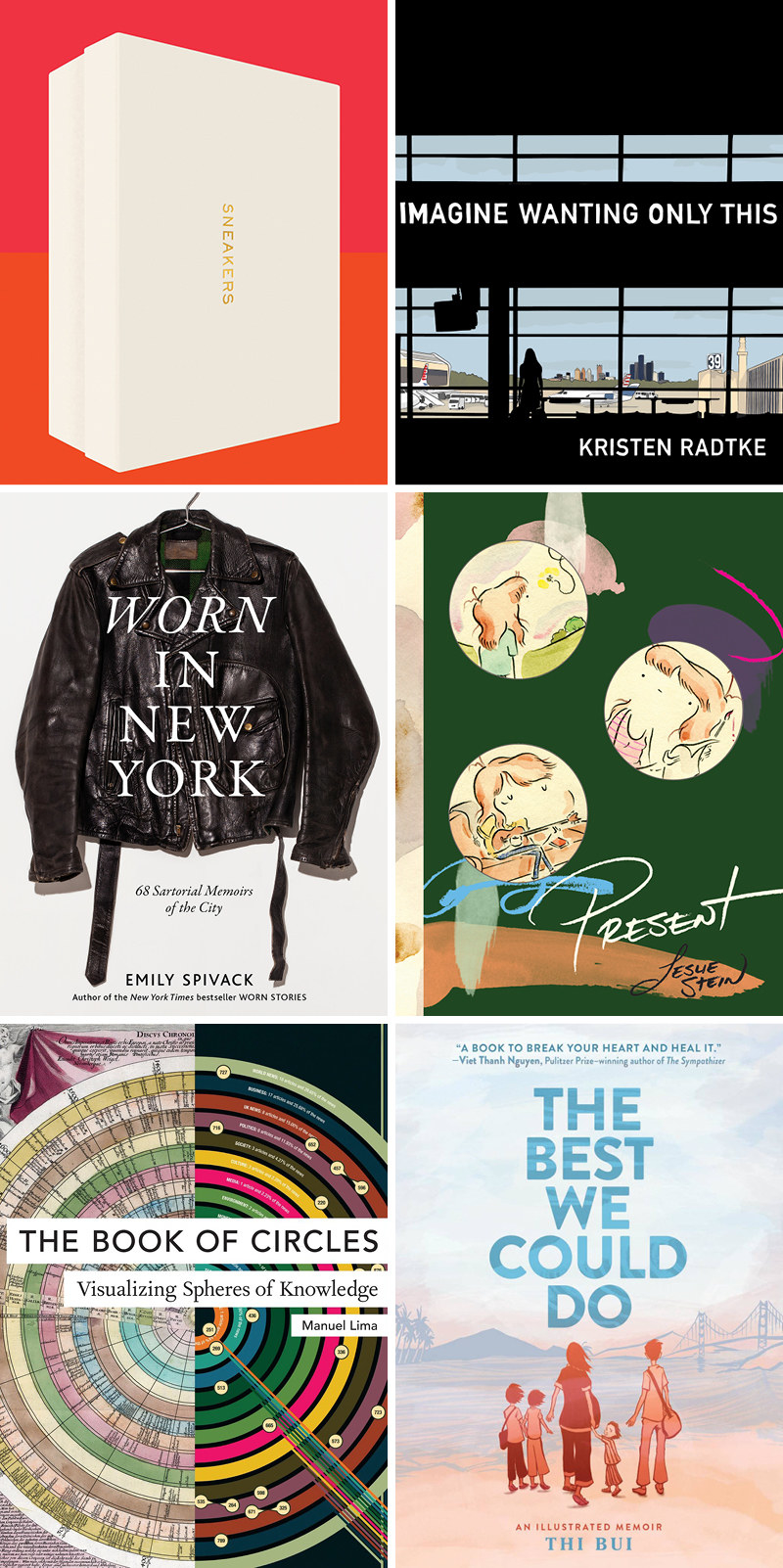
No excuses! Even the busiest person can make time for these beautiful collections and graphic novels — especially since many of these are perfect for picking up months after you left them, no worries about remembering what happened last.
Leslie Stein's Present is a collection of diarylike graphic short stories — frank, charming, insightful meditations on daily life that manage to be sentimental but not cloyingly so. Emily Spivack's Worn in New York is made up of short stories — this time centered on clothing and accessories that each storyteller (including Eileen Myles, Jenji Kohan, and Adam Horowitz) associates with New York, and paired with spare images of those items. Sneakers, by Rodrigo Corral, Alex French, and Howie Kahn, is also an anthology of sartorial tales — technically about sneakers but really much broader, touching on design, branding, street culture, and entrepreneurship.
The graphic memoirs of the group — Kristen Radtke's Imagine Wanting Only This, a poignant meditation on abandonment by people and of places; Thi Bui's The Best We Could Do, an intimate tale of family, immigration, and displacement — are a little bit more of a time commitment, but so, so worth it. (Check out a story by Kristen Radtke here.)
And for a collection of fascinating facts, there's Manuel Lima's The Book of Circles, full of circular diagrams about circles themselves, and the shape's connection to subjects as wide-ranging as architecture, urban planning, fine art, design, technology, religion, and science.
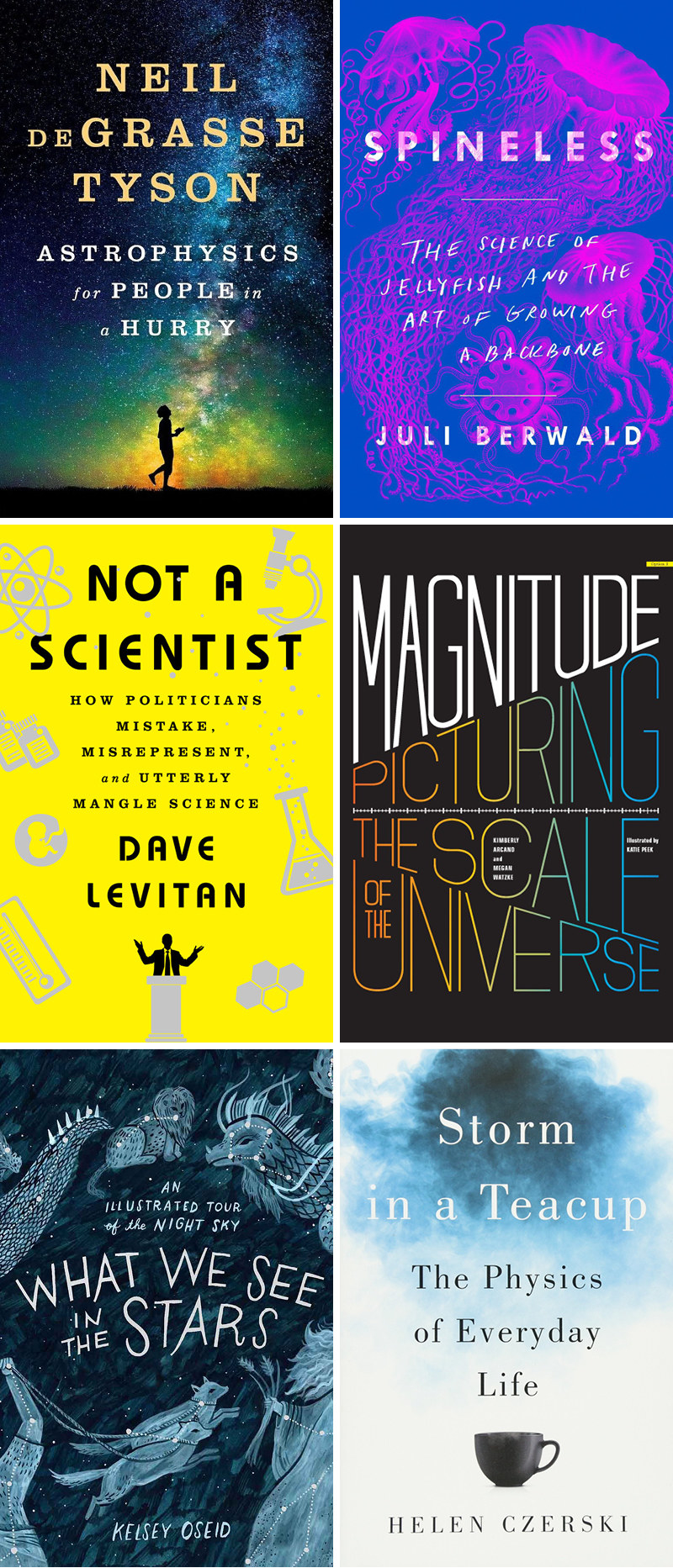
Trust me when I tell you that readers DO NOT need to be professionals to appreciate these books. These books are science brought down to earth, accessible to those with a casual interest but still worthwhile to those who could handle the most technical of texts.
Spineless: The Science of Jellyfish and Growing a Backbone is as much about Juli Berwald's path toward the confidence to take a risk in her career as much as it is about the creatures who inspired her to do so, and it's perfect for the science lover who leans toward literature. For those energized by politics, Dave Levitan's Not a Scientist is an examination of the history and effects of political manipulation of science.
Magnitude: Picturing the Scale of the Universe, by Kimberly Arcand and Megan Watzke, illustrates the utter immensity of the universe, and is not only a super-effective way of reminding the reader that she is a tiny, tiny speck in the grand scheme of things, it also makes a great coffee-table book. Ditto What We See in the Stars, in which Kelsey Oseid renders the history, science, and myths of our solar system in stunning hand-painted art.
Celeb scientist Neil DeGrasse Tyson's Astrophysics For People in a Hurry is a great beginner's guide, offering info on everything from quantum mechanics to black holes to the search for alien life, all in bite-size chunks. And Helen Czerski's Storm in a Teacup brings physics close to home, linking everyday objects to such fundamental principles of gravity and time, and to such big issues as the energy crisis and medical testing.
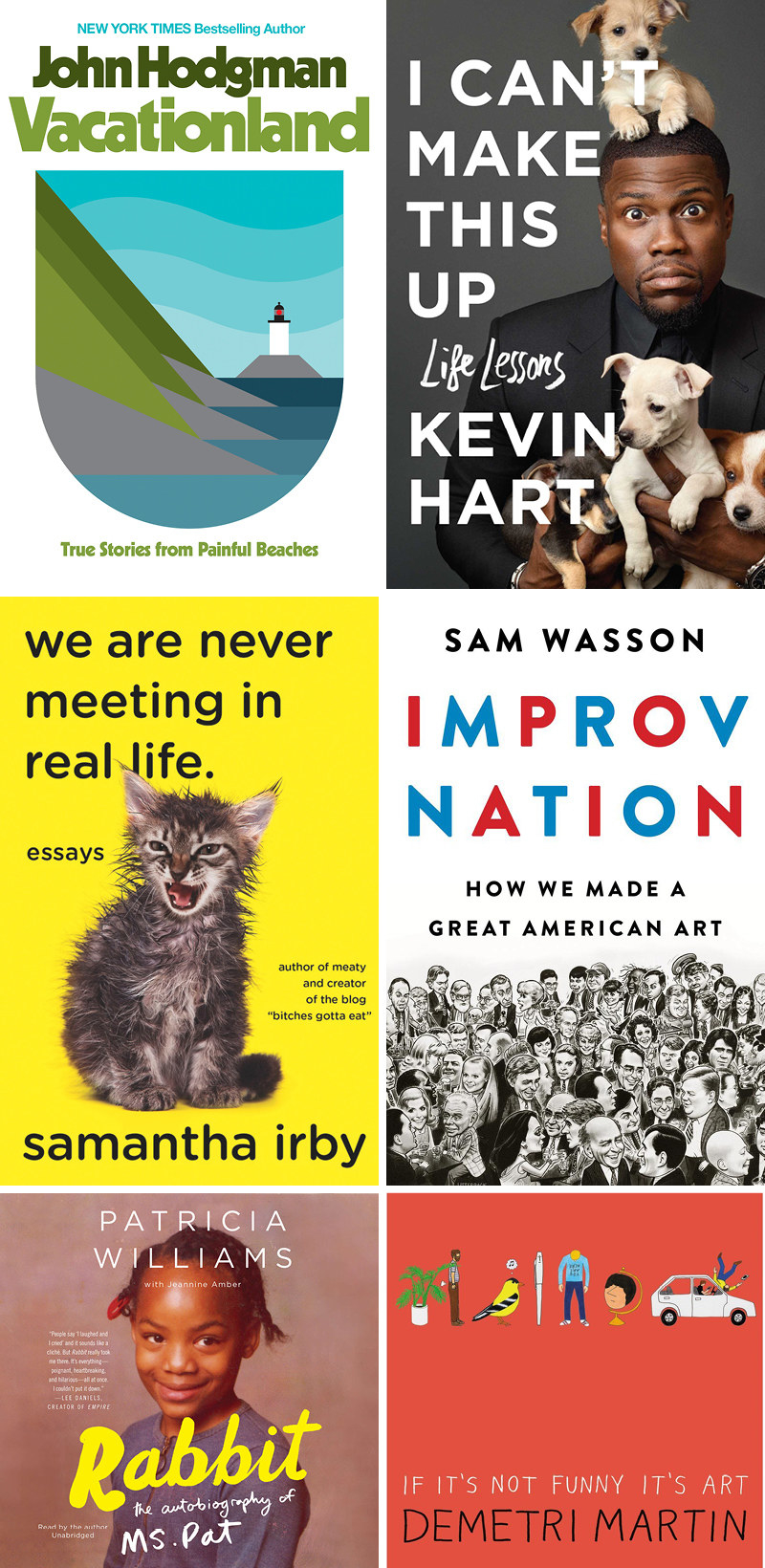
It was a good year for the comedian memoir: Kevin Hart's I Can't Make This Up is a heartfelt and inspirational tale of beating the odds. Samantha Irby's We Are Never Meeting in Real Life is a collection of artful essays poking fun at Irby's romantic foibles, ailments, and general awkwardness — all in her signature hilarious voice.
Patricia Williams' Rabbit is as brutal as it is funny, describing her hard-knock childhood (pickpocketing drunks at age 7 for survival, mother of two by 15) and the ways in which she struggled her way to success. At the polar opposite is John Hodgman's Vacationland, a collection of essays about, yes, his multiple homes, but Hodgman is frank, self-aware, and ready to call himself out for his "white privilege mortality comedy." It helps that the book is laugh-out-loud funny.
For something more historical, there's Sam Wasson's Improv Nation: How We Made a Great American Art tracking the rise of unscripted comedy, from the word-of-mouth success of Chicago's Second City through the present, when some of the biggest players in improv are claiming a huge stake in modern culture. Something light and silly more your speed? Grab Demetri Martin's If It's Not Funny It's Art, a collection of wacky drawings about art, life, death, and, of course, farts.
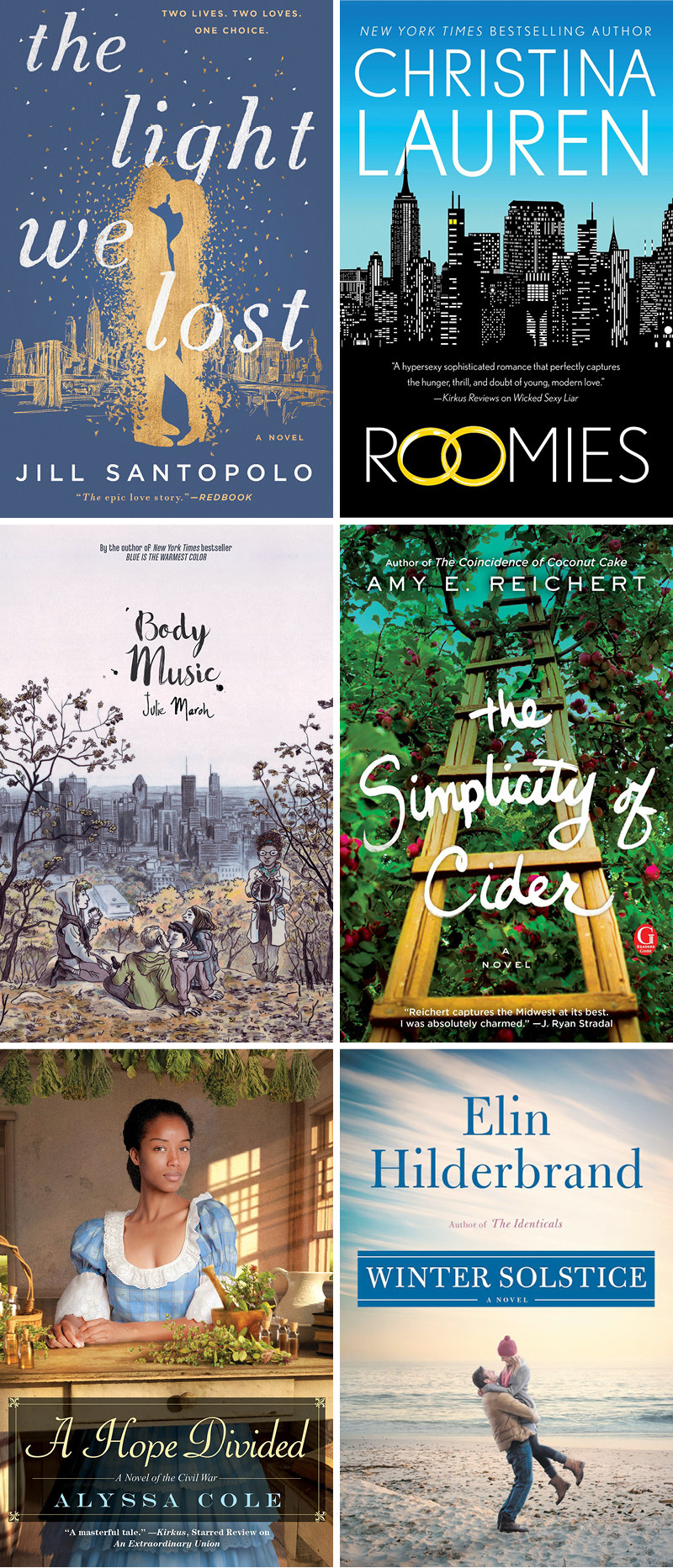
What's better than giving someone a happily ever after? For the person who likes their romance with an element of serendipity (and a decent amount of crying) there's Jill Santopolo's The Light We Lost, which follows a star-crossed couple through 13 years of friendship, betrayals, and love.
Some thrive on something a little more high-stakes — for them, there's Alyssa Cole's A Hope Divided, the Civil War–era romance that follows the daughter of a formerly enslaved woman, and the escaped prisoner she's been harboring, while they flee for safety. It's more inconvenience than tension in Amy E. Reichart's The Simplicity of Cider, about a quiet cider-maker whose dream of a simple life — and whose family's orchard depends on her hard work — is disrupted by the arrival of a (very handsome) single father.
Roomies by Christina Lauren is a playful, sexy romp about a marriage of convenience between a street musician with an expired student visa and the young woman who keeps finding ways to run into him. Body Music by Julie Maroh (of Blue Is the Warmest Color fame) is about love in all its forms — exploring jealousy, passion, comfort, and ecstasy. (Check out an excerpt here.)
And Elin Hilderbrand's Winter Solstice isn't technically a romance, but it's chock-full of love — familial and romantic, complicated and heartwarming.
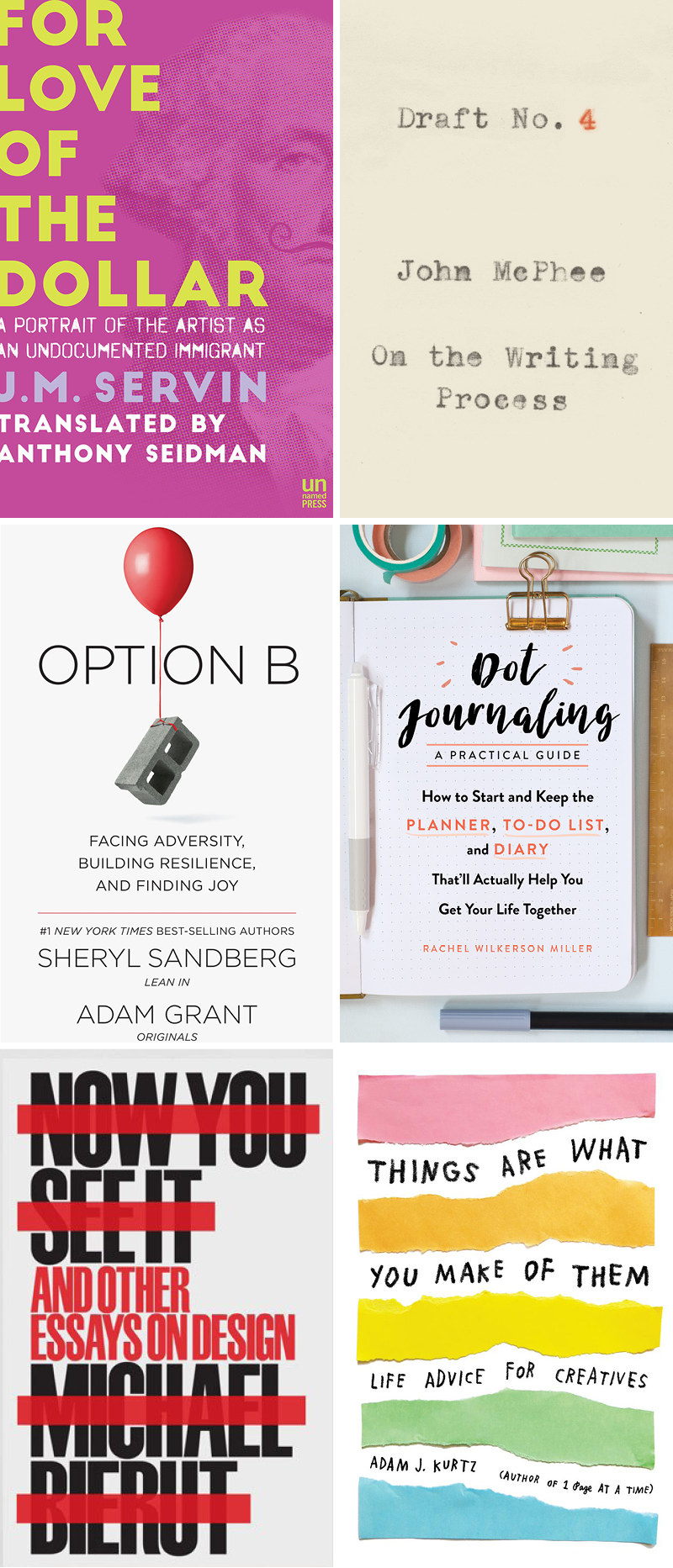
Pursuing art in all its forms, whether professionally or not, requires so much resilience and faith. Former BuzzFeed writer Adam J. Kurtz's Things Are What You Make of Them is full of pick-me-ups and reminders that you are more than your self-doubt, and certainly you aren't alone in them. (Check out a preview here.)
Both Option B by Sheryl Sanberg and Adam Grant and For Love of the Dollar by J.M. Servin are about overcoming adversity — the former a heartbreaking story inspired by the death of Sanberg's husband, all about the ways in which we find and foster strength; the latter a memoir about an immigrant who follows his journalism dream to the US and finds that dream undermined by racial conflict, economic pressure, and hubris.
For the person who's always trying to get their shit together, there's BuzzFeed writer Rachel Wilkerson Miller's Dot Journaling: A Practical Guide — it's part diary, part planner, and promises to help you get every aspect of your life organized. John McPhee's Draft No. 4 is a master class on nonfiction writing, told through sharp and playful essays on tone, editing, timing, and structure. And for the artists and designers, there's Now You See It, an anthology of essays by celebrated designer Michael Bierut, covering pop culture, process, inspiration, mentorship, and the history of design.
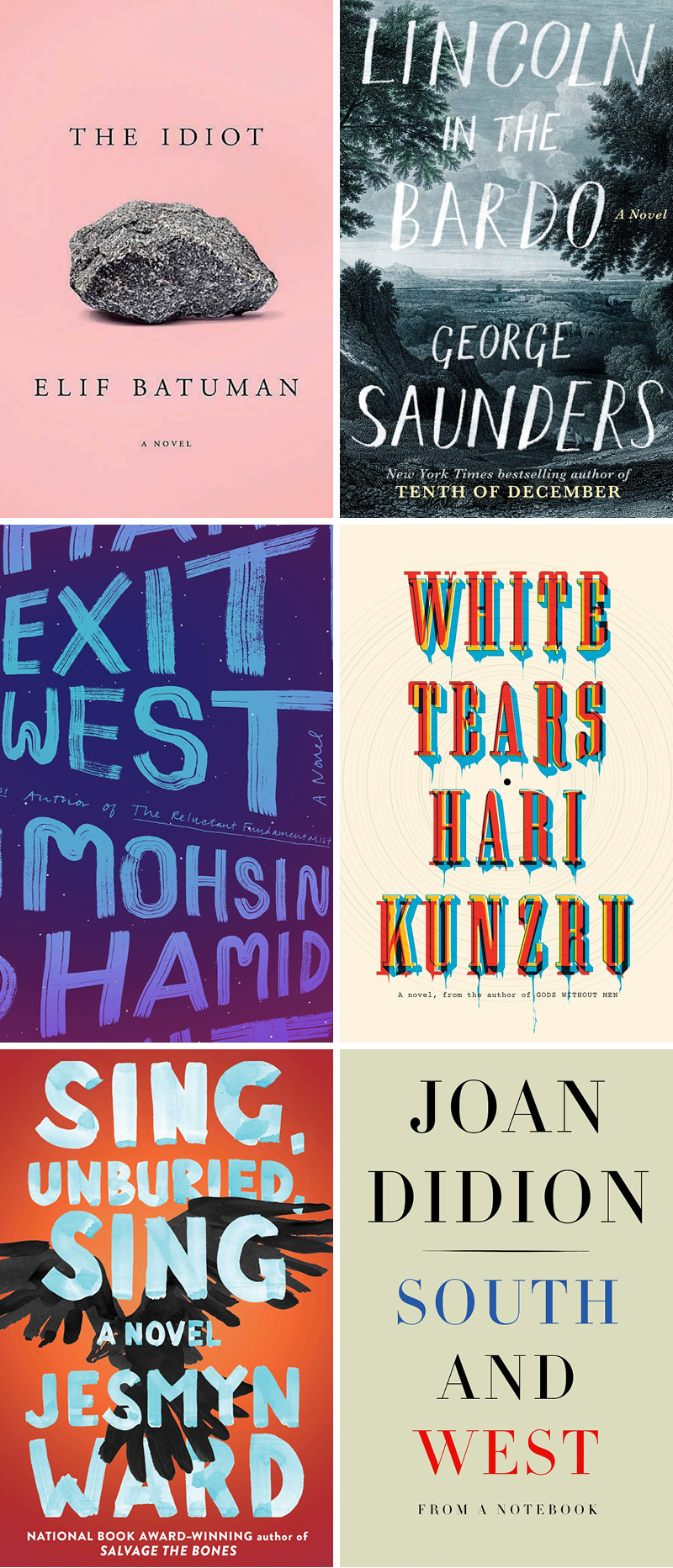
Get that English major something they can really chew on, a challenging and experimental text just begging to be unpacked. Like, for example, National Book Award winner Sing, Unburied, Sing by Jesmyn Ward, which tells the story of 13-year-old Jojo as he tries to both uncover his family's history and learn what it means to be a man. (Read an excerpt here.) Or there's Mohsin Hamid's Exit West, a perilous love story embedded in the violence of an unnamed, war-torn Middle Eastern country.
Elif Batuman's The Idiot is a sprawling, philosophical coming-of-age story about a college student's summer in Europe. George Saunders' Lincoln in the Bardo takes a historical truth — Abraham Lincoln's frequent visits to his dead son's grave — and runs with it, imagining Lincoln in purgatory, narrated by a chorus of voices, resplendent and surreal. Hari Kunzru's White Tears is a dark murder mystery spanning decades and meditating on race, greed, privilege, and music.
And for nonfiction fans, there's Joan Didion's South and West, two never-before-seen excerpts from Didion's legendary notebooks — one tracing a 1970 road trip, the other an extended, unfinished essay on the Patty Hearst trial of 1976.
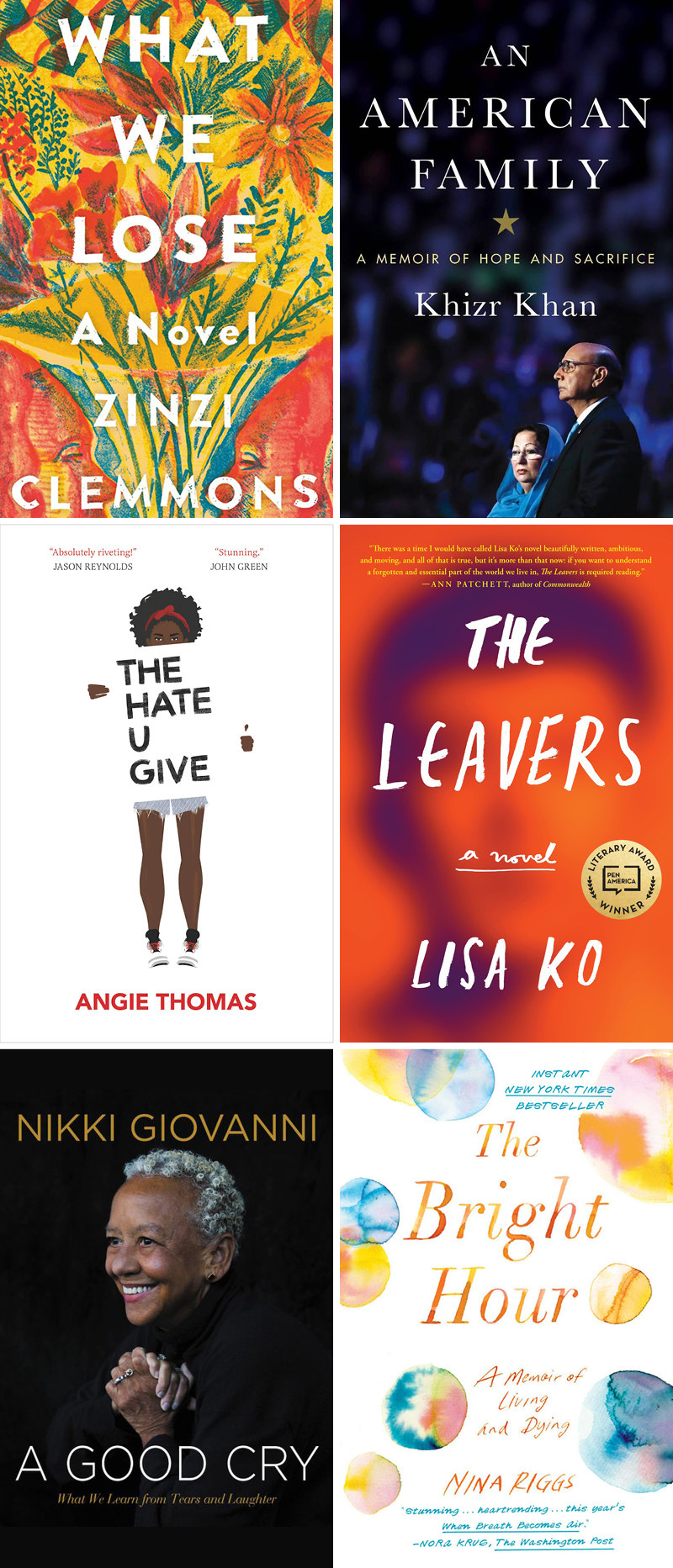
There is probably nothing that will empty a tissue box faster than a memoir by a person who is dying, and poet Nina Rigg's The Bright Hour is particularly devastating. At 37 years old, Riggs stares down a terminal diagnosis and contemplates the life she'll leave behind, exploring her legacy, powerlessness, and purpose.
Khizr Khan's An American Family is the behind-the-scenes story of the Muslim man made famous when he reminded Trump — and the country as a whole — that his son fought for this country and died while doing so.
On the fiction side, there's Lisa Ko's The Leavers, about a Chinese mother who seemingly abandons her son, who spends his life wondering why. Angie Thomas's The Hate U Give is a gut-wrenching story about a 16-year-old girl who witnesses her best friend being fatally shot by a police officer — technically YA but should be required reading for all. What We Lose by Zinzi Clemmons is a story of displacement, following a woman as she struggles to understand her identity after her mother's death.
And, yes, it's super meta, but poet Nikki Giovanni's A Good Cry — an affecting memoir, an ode to the friends and artists and family who have given Giovanni's life meaning — will not only make the reader cry, it will also celebrate what those tears teach us.
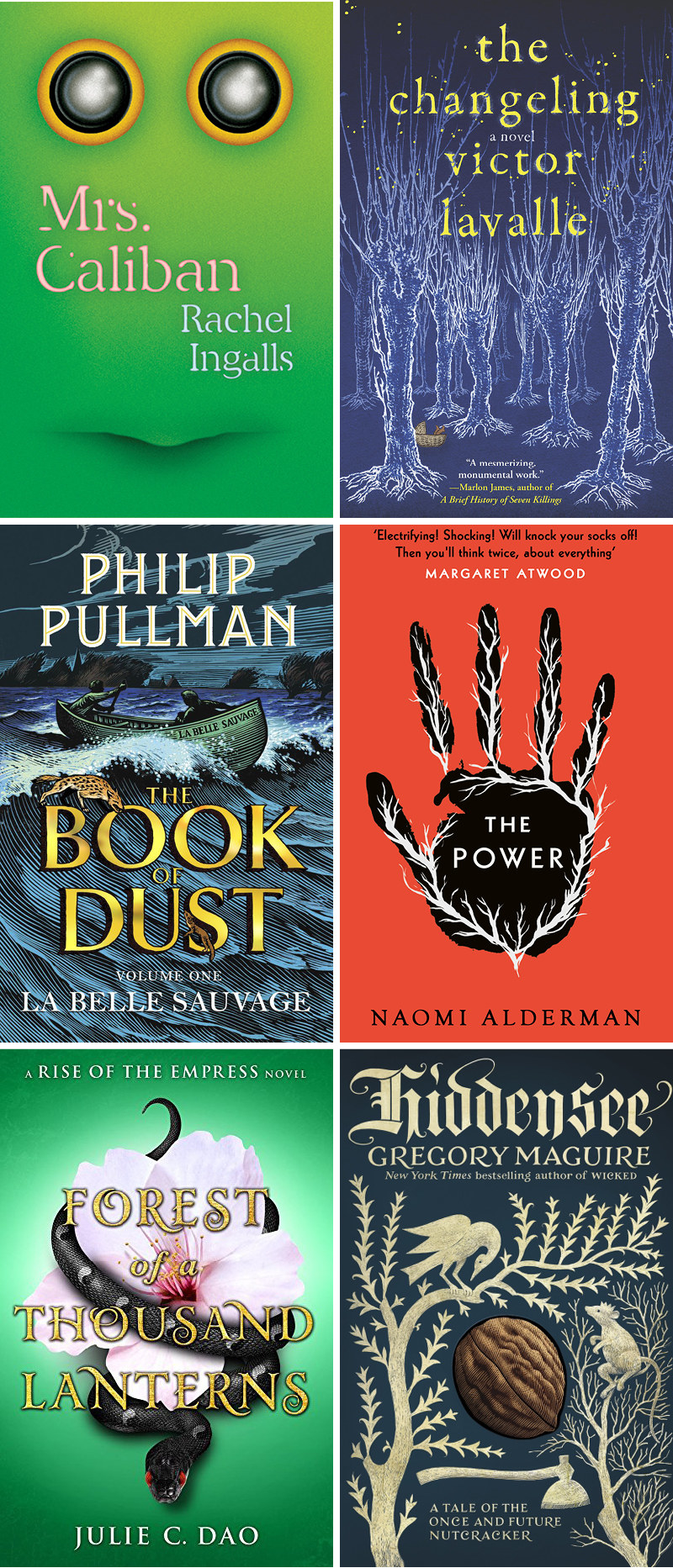
Time for an escape!
Fantasy fans were #blessed this year by the return of two masters: First you've got Philip Pullman, with La Belle Sauvage — the first book of his new trilogy — and it's everything Pullman stans love and more: precocious heroes, secret evil organizations, spirituality, an otherworldly journey, and, of course, dæmons. Then there's Gregory Maguire, whose Hiddensee: A Tale of the Once and Future Nutcracker is an inventive, and often dark, retelling of the holiday classic.
Rachel Ingalls is back, too, but not with a new book — her 1982 classic Mrs. Caliban is back in print, and if your favorite fantasy lover hasn't read it, they should, especially if they like their fantasies weird. The book tells the story of a lonely suburban wife who finds friendship (and maybe more?) with a lizard-man who's escaped from a local lab.
In Forest of a Thousand Lanterns, Julie C. Dao builds an East Asian–inspired fantasy world in which a peasant girl destined for greatness must sacrifice love and challenge evil to meet her destiny. In Victor Lavalle's The Changeling, a man whose wife disappears into thin air — just as his father did when he was only a boy — finds himself searching for her in mystical worlds. And in Naomi Alderman's The Power, the power dynamics of a recognizable world shift when teenage girls suddenly find they have the power to cause pain and death with just a touch.
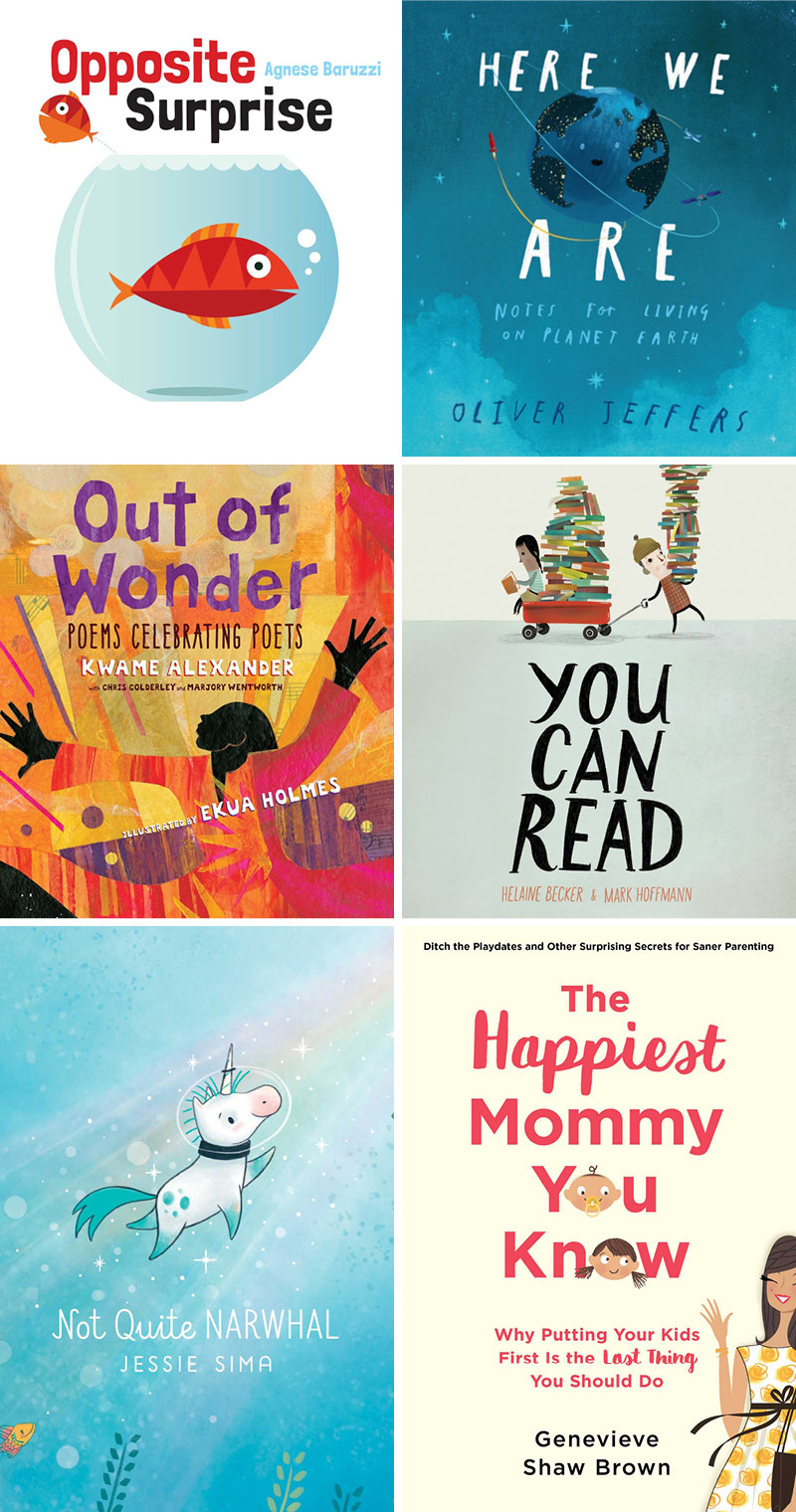
It's never too soon to start building a child's library. In Here We Are, Oliver Jeffers offers a guide to life on Earth, describing our place in the universe and emphasizing the importance of kindness; it is a true work of art. Jessica Sima's Not Quite Narwhal is an impossibly cute story of family and belonging, following a unicorn who happens to be born to a family of narwhals.
Out of Wonder by Kwame Alexander, Chris Colderley, and Marjory Wentworth is sure to instill a love of language in the little ones through its collection of original poems celebrating the poets who inspire them. You Can Read by Helaine Becker and Mark Hoffman has a similar objective, showing kids all the many wonderful places where they can read. For the toddlers, there's Agnese Baruzzi's Opposite Surprise — an engaging fold-out book to help toddlers explore opposites in a new way, looking at concepts as well as objects.
And for the busy parents themselves, there's Genevieve Shaw Brown's The Happiest Mommy You Know: Why Putting Your Kids First Is the LAST Thing You Should Do which urges moms to take care of themselves — but proceed with caution!! Not all parents will appreciate what might look like unsolicited advice.
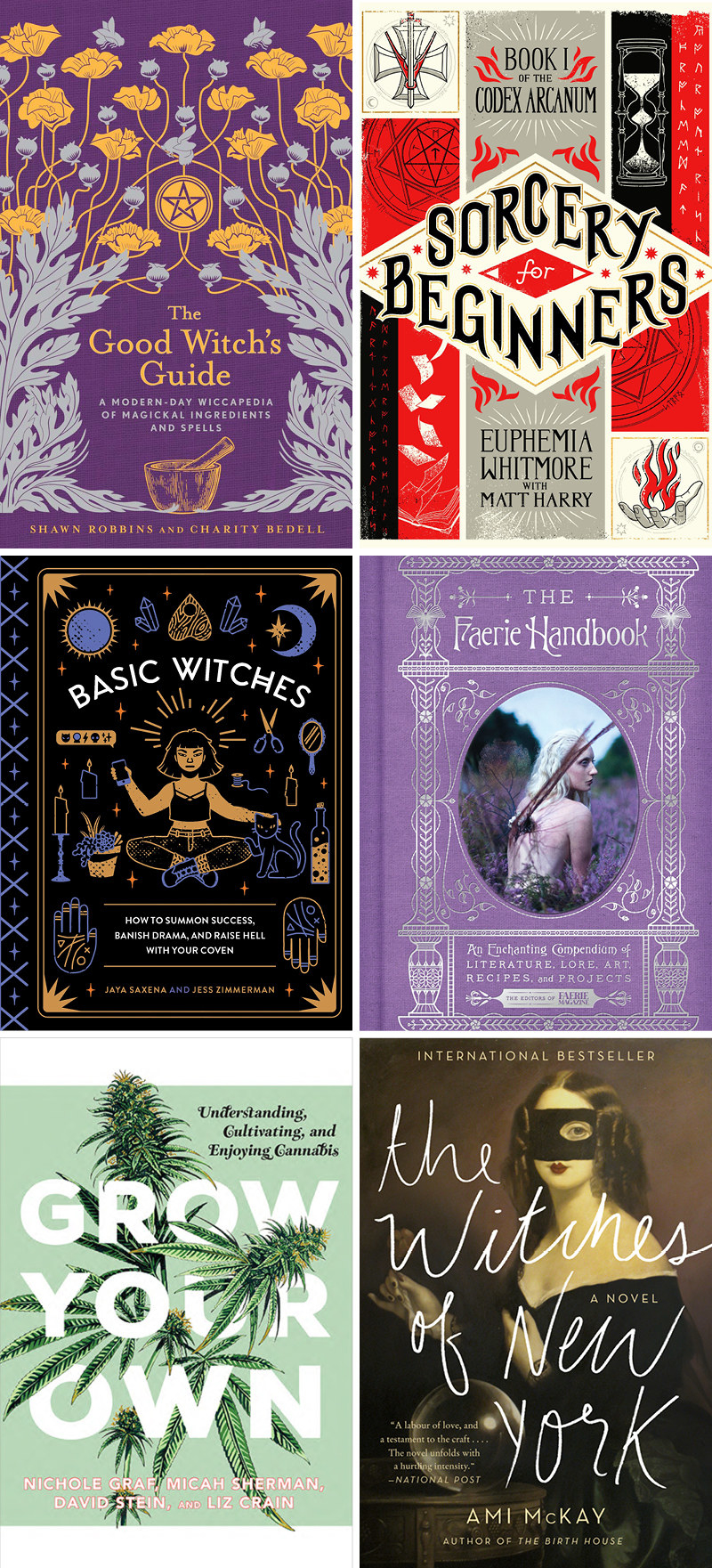
Celebrate the winter solstice with some magick. You can take your pick from some top-notch guides: Both The Good Witch's Guide by Charity Bedell and Shawn Robbins and Basic Witches by Jaya Saxena and Jess Zimmerman offer instructions for spells, projects, and rituals — the former focused on general harmony and spirituality, and the latter honing in on more specific, modern goals for success in careers and relationships.
From the editors of Faerie Magazine comes The Faerie Handbook — a lush, dreamy anthology of myth and mysticism, with stories, recipes, and projects divided among four sections: Flora and Fauna; Fashion and Beauty; Arts and Culture; and Home, Food, and Entertaining. And for those who incorporate marijuana into their rituals, there's Grow Your Own, by Nichole Graf, Micah Sherman, David Stein, and Liz Crain, which promises to teach everything the aspiring home grower needs to know.
If you're looking for someone who's got the spell-books covered, you might want to turn to fiction: Matt Harry's Sorcery for Beginners follows a down-on-his-luck eighth grader who discovers a guide to real magic, and it's interspersed with recipes from that book. It's technically for early teens, but would be a fun getaway for any age. Ami McKay's The Witches of New York is a different tone altogether — a dark, atmospheric, and feminist story of three women in New York City's Gilded Age, each determined to thrive in a society hell-bent on keeping them down, and using their coven to do so.
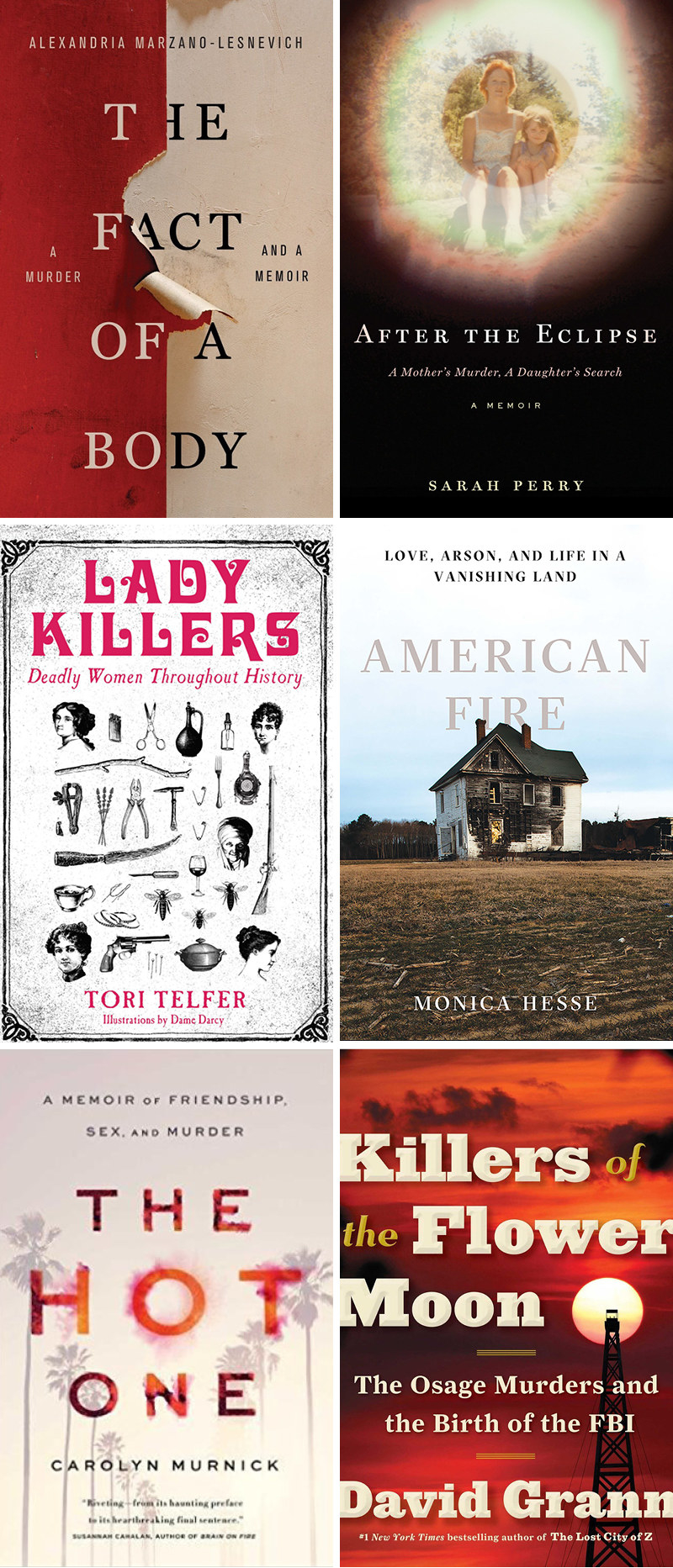
You know who they are. Can't stop listening to My Favorite Murder. Watched allllll of the true-crime docs, maybe more than once. Here's what they'll want to read:
In The Hot One, Carolyn Murnick travels the country investigating the murder of her childhood best friend — a woman who'd grown from preteen misfit to the titular "hot one." After the Eclipse is part investigation and part eulogy; after her mother's murderer is convicted, Sarah Perry doesn't find the peace she anticipated, and so she focuses on understanding her mother's life rather than her death. In The Fact of a Body, Alexandra Marzano-Lesnevich — a lawyer who is shocked to find that she wants the convicted murderer she's defending to die — reckons with personal transformation, and her memoir tackles such thorny issues as truth and forgiveness.
In Killers of the Flower Moon, David Grann revisits the early 20th-century mass murder of members of the Osage tribe and tries to uncover the mysterious circumstances that led to their deaths — a daunting task, since those who dared to investigate it in the past were often found dead themselves. Lady Killers isn't about one specific case — Tori Telfer (who originally wrote about these lady killers in a Jezebel column) gathers the stories of 14 terrifying serial killers who all happen to be women.
American Fire is actually not about murder — just, you know, arson. Reporter Monica Hesse travels to Accomack County in Virginia, where abandoned buildings were burning down by the dozen, and ends up investigating what in the county's past led to this bizarre chain of crimes.
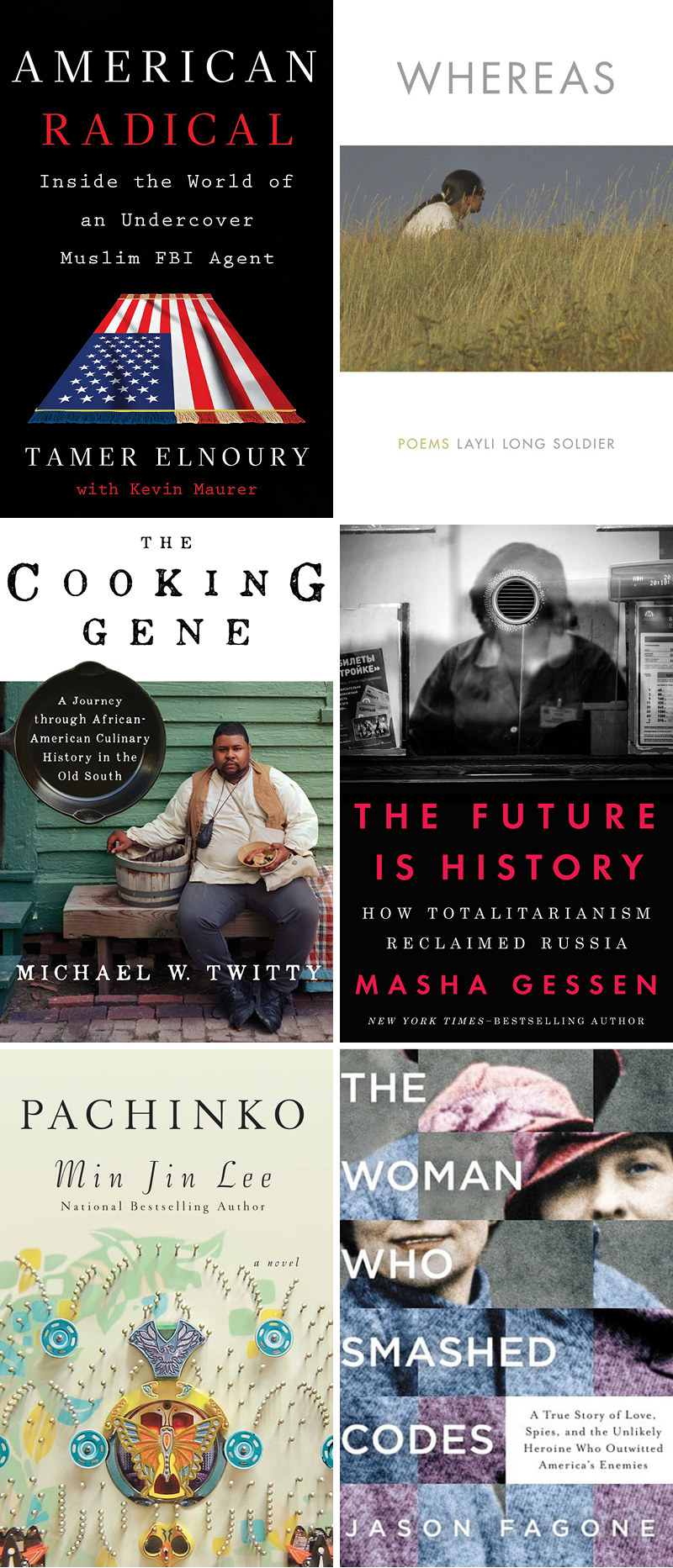
Masha Gessen went viral last year with her post-election article "Autocracy: Rules for Survival," pulling from her experience living in Putin's Russia. In this year's The Future Is History: How Totalitarianism Reclaimed Russia she dives deeper, elucidating the events and forces that — over the course of one generation — returned Russia to a Soviet order seemingly stronger than ever.
If it's US history your favorite history buff is after, there's The Woman Who Smashed Codes: A True Story of Love, Spies, and the Unlikely Heroine Who Outwitted America's Enemies, Jason Fagone's biography of the woman who invented cryptology; American Radical: Inside the World of an Undercover Muslim FBI Agent, Tamer Elnoury's gripping memoir about infiltrating a terror cell and bringing it down from the inside; and The Cooking Gene: A Journey Through African-American Culinary History in the Old South, in which culinary historian Michael W. Twitty pulls from his research and his own family to chart the politics around the origins of soul food.
Layli Long Soldier's Whereas is about American history — Native American history, to be exact — but told in wrenching prose poetry. Inspired by the US government's apologies to Native Americans, Long Soldier tears language apart, revealing its violence and coercion, and redefining it by telling her own story in wholly inventive ways.
And for the historical fiction fans, there's the phenomenal Pachinko, Min Jin Lee's epic saga spanning four generations of a poor immigrant Korean family trying to survive in 20th-century Japan.
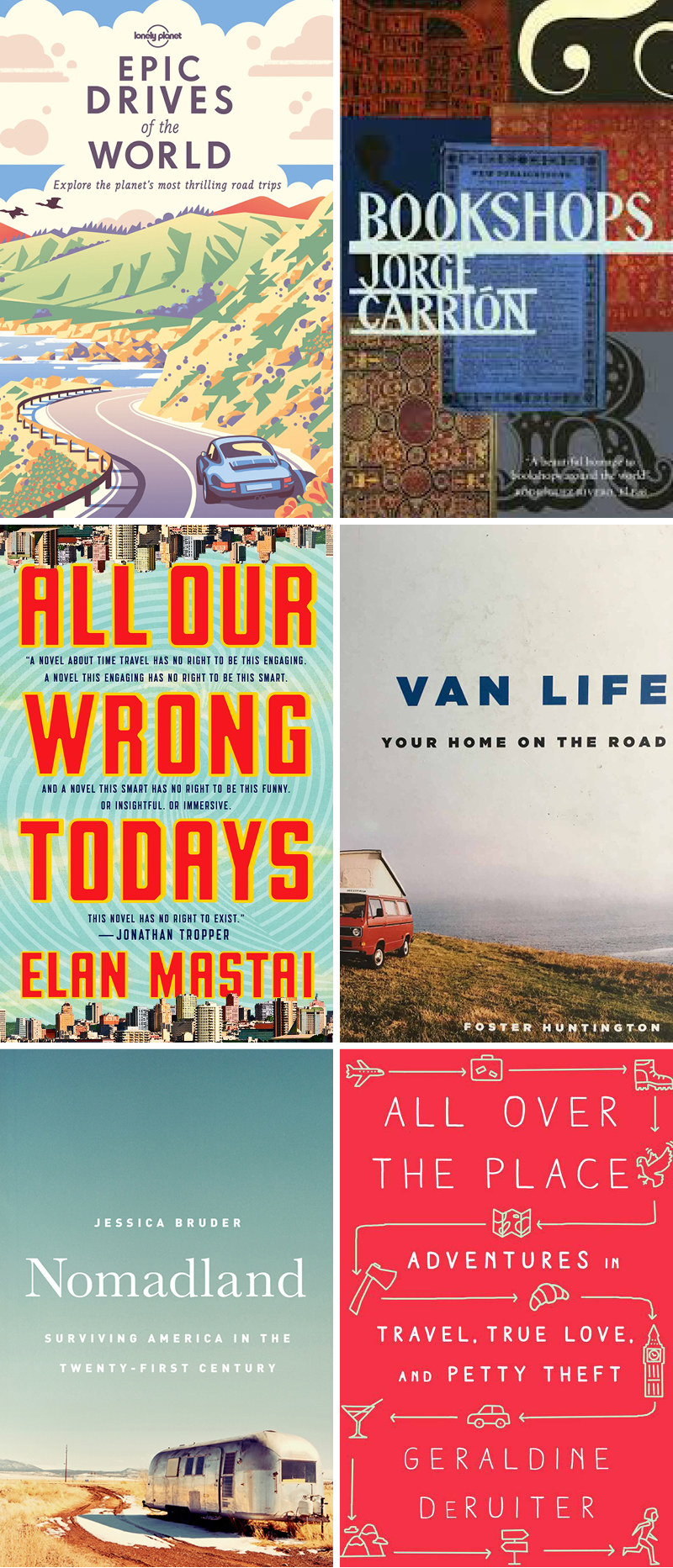
Nothing will inspire a person to schedule their next trip as much as travel writing, and this year brought some gems. Geraldine DeRuiter's All Over the Place: Travel, True Love, and Petty Theft is an essay collection by a woman who swears her anxiety and awkwardness make her the worst type of traveler, and it's all about the things she learned by ignoring that fact.
Bookshops is the perfect merging of love of travel and literature — Jorge Carrión guides readers around the world one bookstore at a time, meditating along the way on the history and importance of the bookshop as a cultural institution.
For fans specifically of travel by automobile there's Lonely Planet's Epic Drives of the World, beautifully illustrated and explained from firsthand accounts; Foster Huntington's Van Life, which challenges the idea that you can't be home on the road; and Jessica Bruder's Nomadland: Surviving America in the Twenty-first Century, which will take that wanderlust and complicate it — there can be freedom in moving into a van, but what about those who make that choice as a last resort? What do they gain and what do they sacrifice?
And then there's another kind of travel, which, for now, we can only find in fiction — time travel. Elan Mastai's All Our Wrong Todays is a novel about an unhappy man who accidentally finds his way to a parallel universe, and then hops through time and space figuring out where he wants to be. It's filled with the questions that will ring true to anyone who's wandered from place to place: Where will I be happiest? And what will I miss when I'm there?

Obviously there could be overlap between your morbid friend and the true-crime fanatics, but think of this one as the person *especially* intrigued by death. One might even say preoccupied with death. Also they might have a pretty strong stomach. Okay, onward:
Celebrity mortician (what a title!) Caitlin Doughty's latest book, From Here to Eternity: Traveling the World to Find the Good Death, continues her inquiry into human understanding and treatment of death — this time by leaving the US funerary traditions to investigate death rituals around the world. On a similar note is Thomas Mira y Lopez's The Book of Resting Places: A Personal History of Where We Lay the Dead, a heartfelt and personal exploration of hallowed grounds — and the history and mythology surrounding them — inspired by the sudden death of Mira y Lopez's father.
On the grislier side is Lindsey Fitzharris's The Butchering Art, which traces the development of antiseptic methods in 19th-century surgery without sparing any of the truly horrifying details along the way. Aaron Mahnke's The World of Lore: Monstrous Creatures is more creepy than grisly, but this compendium of the real-life bases of some of our scariest monsters can get very, very dark. (Check out a preview here.) And then there's Anne Elizabeth Moore's Body Horror: Capitalism, Fear, Misogyny, Jokes — an utterly macabre (but funny, I swear!) collection of essays laying bare the daily violences committed against women's bodies.
And for the fiction fans, there's Greg Ames' Funeral Platter, a collection of darkly funny stories covering the absurdities of modern life — and death.
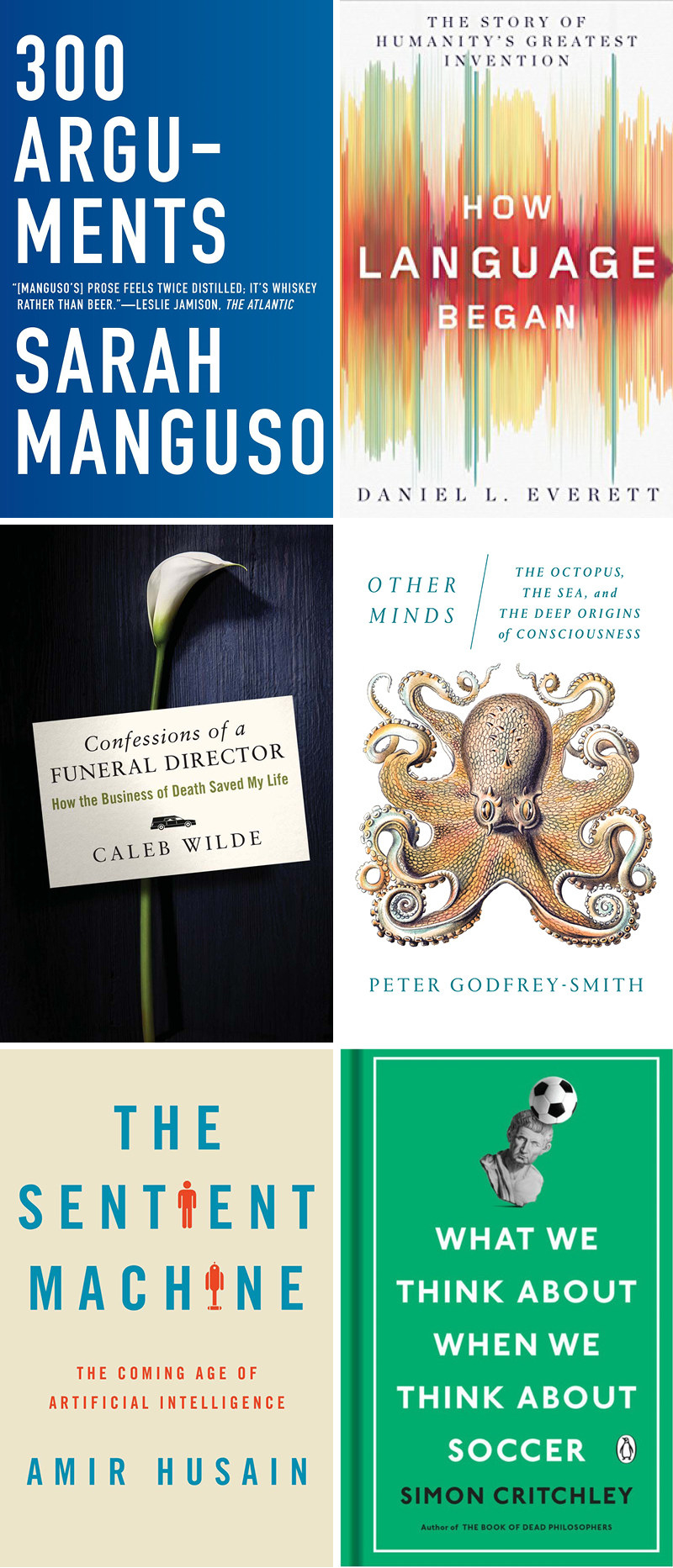
Get your most contemplative friend something to make them think about what they're thinking about. Daniel L. Everett's How Language Began: The Story of Humanity's Greatest Invention challenges the theory that language is intrinsic to the human species, and looks at its origin from multiple perspectives, drawing as much from our culture as from our biology.
Sometimes the best way to think about the way we think, though, is to consider the minds of others. Philosopher Peter Godfrey-Smith's Other Minds: The Octopus, the Sea, and the Deep Origins of Consciousness turns the focus to cephalopods and their documented advanced intelligence, developing a new story of how nature evolved to become aware of itself. In Amir Husain's The Sentient Machine: The Coming of Age of Artificial Intelligence, readers are forced to contend with the big, existential questions: What is our value in a world with AI? What will separate us from them, and why?
Or maybe you're the philosopher and you're trying to convince your loved one it's not as stuffy a discipline as they might think. Sneak some deep thoughts in through Simon Critchley's What We Think About When We Think About Soccer, which asks what the world's most popular sport tells us about identity, class, and aesthetics; Sarah Manguso's 300 Arguments, a collection — sometimes disorienting, but that's part of the fun — of aphorisms on things like grief, ambition, and art; or Caleb Wilde's Confessions of a Funeral Director, a memoir by a man reluctant to join the family's death business, describing how his work with the deceased and grieving changed his perception of death and life.
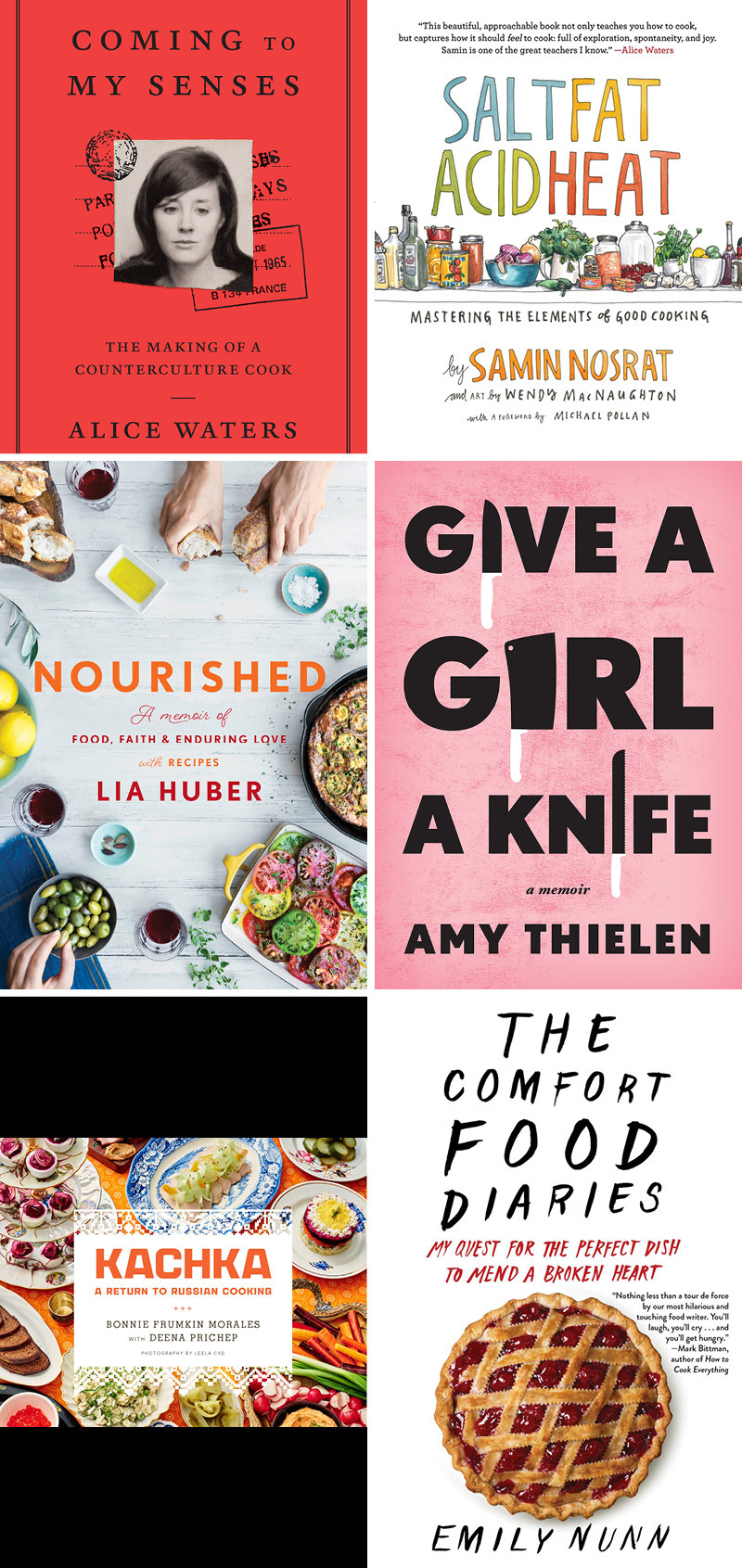
Give the friend enmeshed in restaurant culture a behind-the-scenes look at some of its biggest forces. Alice Waters' memoir Coming to My Senses shares the history that led to her opening the revolutionary Chez Panisse, and how Waters grew into an activist affecting global change through food. In Give a Girl a Knife, famed cookbook writer Amy Thielen describes the search for her culinary roots — from her Midwestern upbringing to the exhilarating world of New York haute cuisine.
For those more in love with food itself than with the food industry, there's Emily Nunn's The Comfort Food Diaries: My Quest For the Perfect Dish to Mend a Broken Heart, a tender memoir about the healing power of food and community, describing Nunn's attempts to travel and cook her way through the grief of a devastating breakup and her brother's sudden death. Lia Huber's Nourished is also deeply heartfelt, exploring her journey toward using food to nourish physically, emotionally, and spiritually.
And for those foodies who are just as obsessed with cooking as they are with eating: Samin Nosrat's Salt Fat Acid Heat is the best-selling guide — beautifully illustrated by Wendy MacNaughton — that promises to turn any amateur into a master; and Bonnie Frumkin Morales brings the cult-fave Portland restaurant Kachka to readers at home in Kachka: A Return to Russian Cooking. (Request vareniki in lieu of thank-you cards.)
Illustrations by Tania Guerra for BuzzFeed News
